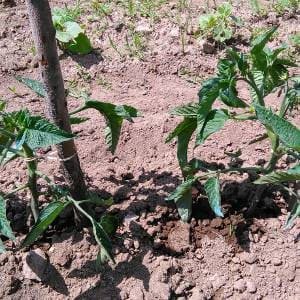Spacing between tomato plants
Warning: Undefined variable $ad_top in /home/u376105422/domains/mundohuerto.com/public_html/main-html-en.php on line 91
Warning: Undefined variable $ad_article in /home/u376105422/domains/mundohuerto.com/public_html/main-html-en.php on line 124
Warning: Undefined variable $ad_into_article in /home/u376105422/domains/mundohuerto.com/public_html/main-html-en.php on line 153
Warning: Undefined variable $ad_into_article_full in /home/u376105422/domains/mundohuerto.com/public_html/main-html-en.php on line 154
Warning: Undefined variable $ad_inter_item in /home/u376105422/domains/mundohuerto.com/public_html/main-html-en.php on line 155
Este es uno de los puntos más importantes a la hora de iniciar un cultivo de tomate, puesto que si no aborda correctamente, puede ser una de las causas principales de la incidencia de enfermedades, maduración tardía y escaso rendimiento.

If the distance between plants is insufficient ―very high density―, it is very likely that the incidence of diseases is higher due to low aeration while the plants will compete among themselves for light, water and nutrients, making growth difficult. slower, lower productivity, tomatoes will be smaller, ripen more slowly, and less uniform in size. In addition, the tasks of the crop such as hilling, pruning or staking will become more difficult due to the lack of space between the plants to work.
On the other hand, if the distance between plants is too great, the soil will be very bare and, therefore, more spontaneous herbs will grow faster, while space is wasted ―unless the tomato crop is associated with others such as onion or lettuce.
The distance between plants should be greater in humid climates and growing seasons, in which solar radiation is scarce. However, in climates or growing seasons that are dry and with great insolation, tomato plants can be planted closer together since light will not be a problem and diseases will not be a problem either ―due to the low environmental humidity.
But let's take a closer look at what depends on whether we have to leave one or another distance between tomato plants, in addition to what we have just seen.
The chosen variety
The different varieties of tomato present different characteristics in terms of vigor, width of the crown and density of the foliage and, therefore, before planting, it will be necessary to try to find out the shape that it will have and the space that each plant will occupy.
Based on this, the distances will be adjusted to make the most of the space but at the same time allow an adequate development of the crop.
In outdoor cultivation
In outdoor table tomato crops, the distance between rows varies between 1.2 and 1.6 meters and the distance between plants between 30 and 50 cm, taking into account the environmental conditions during the growing season.
The planting density in this case would be 1.4 to 1.6 plants/m2.
In humid climates it is preferable to separate the plants more to improve aeration and reduce the incidence of the much feared fungal diseases.
Into greenhouse
Greenhouse tomatoes are usually planted in two different ways:
- In simple rows separated from 1 to 1.4 m between them and leaving between 30 and 50 cm between plants.
-In double rows separated 50 or 60 cm between them and 40-50 cm between plants of the same row, leaving corridors of 80 to 100 cm between each two rows.
Following this arrangement, densities of between 2.2 and 2.5 plants/m2 are reached.
Recommendation
Since tomato cultivation is one of those that can suffer the most sanitary problems, especially with regard to fungal diseases ―highly favored by high humidity and low aeration―, it is highly recommended to use wide distances between plants, at least 50 cm ―better between 80 cm and 1 meter apart – and, if possible, plant the rows at least 1 meter apart.